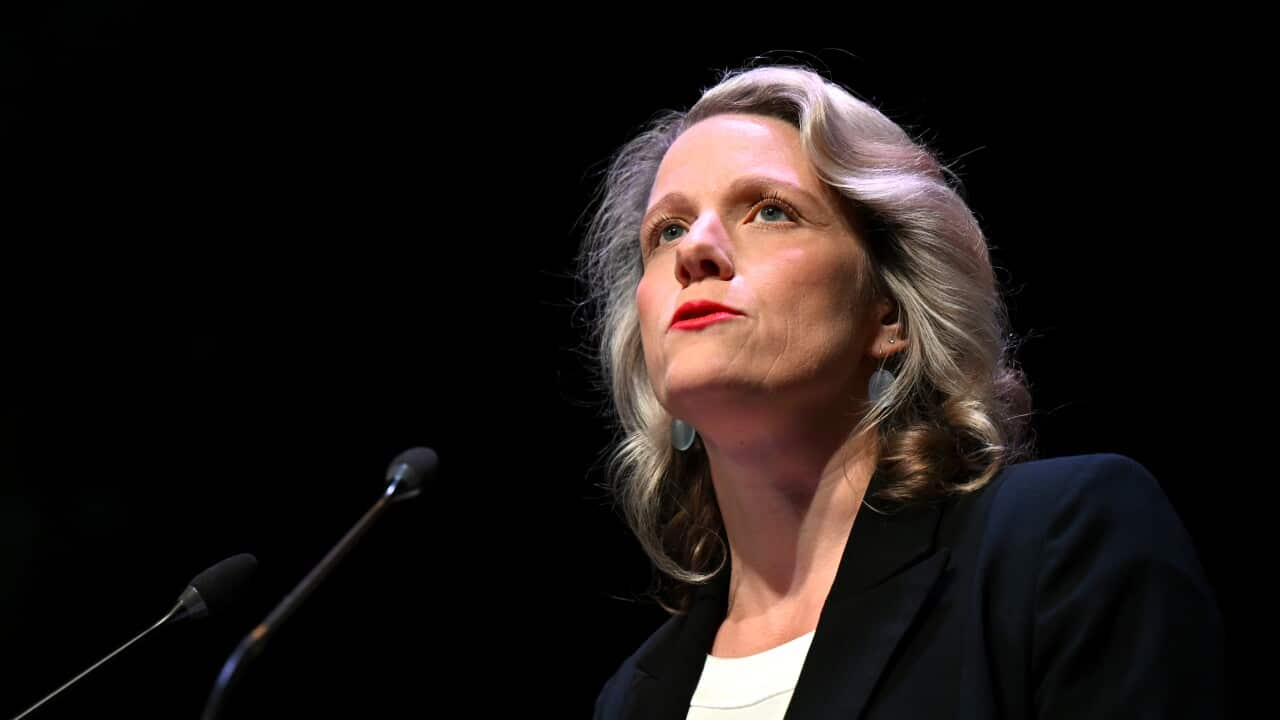When Savannah Yesil was born, her Aboriginal great-grandmother bought her a golliwog doll because she couldn't find any other dolls that reflected her heritage.
"That's all granny could find that she could relate to," Savannah's mother Maryanne Jarrett says.
The golliwog, which was a popular doll up until the 1970s, had jet-black skin and exaggerated red lips, and is now considered a racist caricature of black Africans.
Maryanne, who lives in Sydney, said she wished there had been other doll options for her great-grandmother to buy at the time to represent Savannah's Indigenous heritage.
Inspired by a lack of representation for Aboriginal children, especially those who don't fit the stereotype of having black hair and dark skin, Maryanne and her daughter, who is now 15 years old, have launched a range of Aboriginal dolls, called Dollies Tribe.

Maryanne Jarrett and her daughter Savannah Yesil with one of their most popular Dollies Tribe dolls. Source: Supplied / Dollies Tribe
Maryanne's father is Aboriginal and her mother is white. Her daughter Savannah has fair skin, blonde hair and blue eyes, partly reflecting the Turkish heritage on her father's side.
"[These dolls are about] showing the diversity and how beautiful we all are, but all different, and just to show the world that not all Indigenous Australians are dark-skinned people."
Maryanne said one of her grandchildren is part Filipino as well as part Aboriginal, "and she totally doesn't look either part".
"We're hoping that Dollies Tribe will just teach the world, and children, that they are still Aboriginal. And it doesn't matter what you look like - every single person is represented by these little dolls."
Maryanne, 50, was raised by her Aboriginal grandmother Peggy Jarrett-Green, a Bundjalung woman who grew up on the Clarence River in Baryulgil, northern NSW, and she sees herself as Aboriginal.
"I am Aboriginal, I've always identified as it, I've been brought up with culture through my granny raising me," she said.
"I just don't want Aboriginal people in Australia having to justify to the rest of the world or the rest of society, that they really are Aboriginal.
"If we don't do it now, for my daughter, for my grandkids ... then who's going to do it?"
While Aboriginal dolls have become more readily available since Savannah was born, Maryanne said many had black skin and "that's just not what [the] new generation is, we are a multicultural society".
Dollies Tribe dolls are available in 12 different styles of varying skin and hair colour, and some feature dot painting by Savannah. They cost around $80.
Maryanne said there had been a great response to the dolls and more than 1,000 had been sold since they launched on Instagram in July 2021.
It's not just Aboriginal parents who have been buying the dolls. Maryanne says they are also attracting customers who are not Indigenous.
"Some of these parents [buying the dolls] have little kids that are so diverse in their own family - dark skin, light skin, brown skin, red hair, blonde hair - and they're just loving it," Maryanne said.
"A lot of other parents are identifying with these dolls [saying] 'this little doll looks like my granddaughters - she's half Greek, she's half Lebanese'."
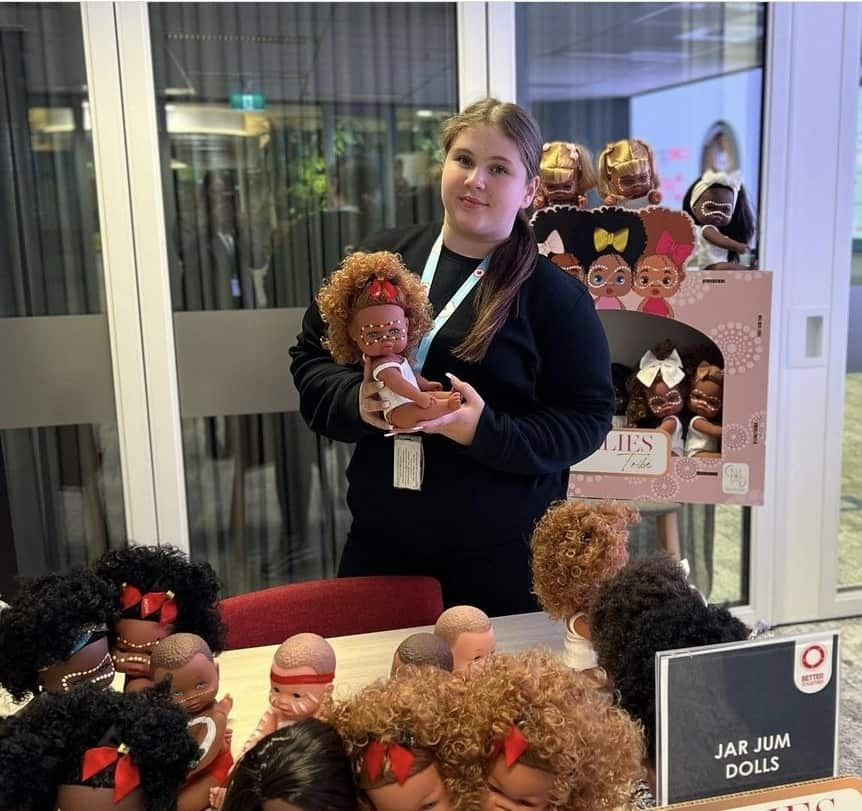
Savannah Yesil with many of the different dolls available from Dollies Tribe. Source: Supplied / Dollies Tribe
Dollies Tribe is certified as an Indigenous business by Supply Nation, an organisation that provides a database of verified Indigenous businesses.
The mother-and-daughter team guided the design of the dolls, which they order from an overseas company, and have created outfits and hairstyles for each one.
Maryanne says Savannah does the dot painting herself, but does not always stick to traditional colours, with some designs featuring soft pinks and gold as well, "so that the dolls just have a meaning for everybody".
She said some of the dolls were also available without the dot painting as it was important for them to represent everybody.
Jordan Trindall is an Indigenous man who bought one of the dolls for his seven-year-old daughter Jayla and said she loves it. It is her only Indigenous doll.
The Sydney man is family friends with Maryanne and said he was proud to support an Indigenous business, especially one selling black dolls.
"It's good to see them out there," he said. "There should be more of stuff like that. To have an Indigenous doll in the house - I'm really proud of it, especially being Aboriginal myself."
Dolls instil a 'sense of pride'
Dollies Tribe is not the only brand of Indigenous doll available, with the ABC even developing a toy for its popular children's program Play School.
Jessica Staines, who is a Wiradjuri woman and Aboriginal early childhood adviser for Play School, collaborated on the design of the show's Aboriginal Kiya doll. She said for many years stores like Kmart, Target and Big W didn't stock black dolls at all.
"You can find, particularly in Kmart, there are lots of dolls that have dark coloured skin and various different physical appearances now and they're readily available, and they're cost effective," the director of Aboriginal early childhood consultancy Koori Curriculum said.
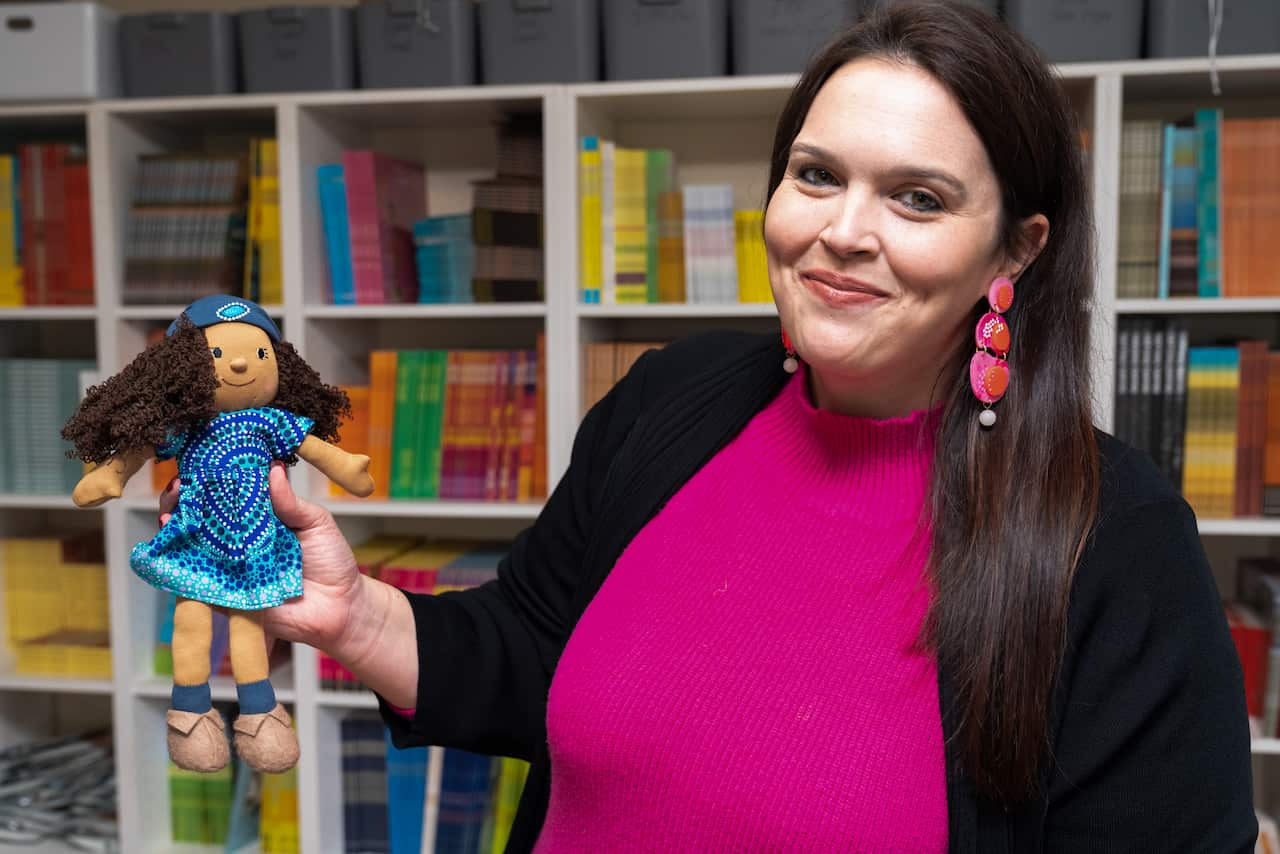
Jessica Staines with the Kiya doll. Credit: Trish Evans Photography
Ms Staines said it was important for children to see themselves in a broad range of books and toys, and it also helped to embed Aboriginal perspectives into the programs of preschools and other services.
"It's about identity and children's self-concept of themselves, and their sense of pride in who they are," she said.
For example, she said if the only books readily available to children with Chinese families as the main characters were those focused on Chinese New Year, they would still be seen as a token, "other", exotic thing rather than a part of everyday Australian life.
When Kiya was first released, Ms Staines said many families rushed to buy her and there were fanatics who would watch every episode in which she appeared on in Play School.
"Her role really is to make connections between whatever the topic is on Play School - whether it's farm animals, or outer space or whatever - and what the Aboriginal perspective is.
"So children are learning a lot through Kiya ... and families are learning alongside their children as well which has been great."
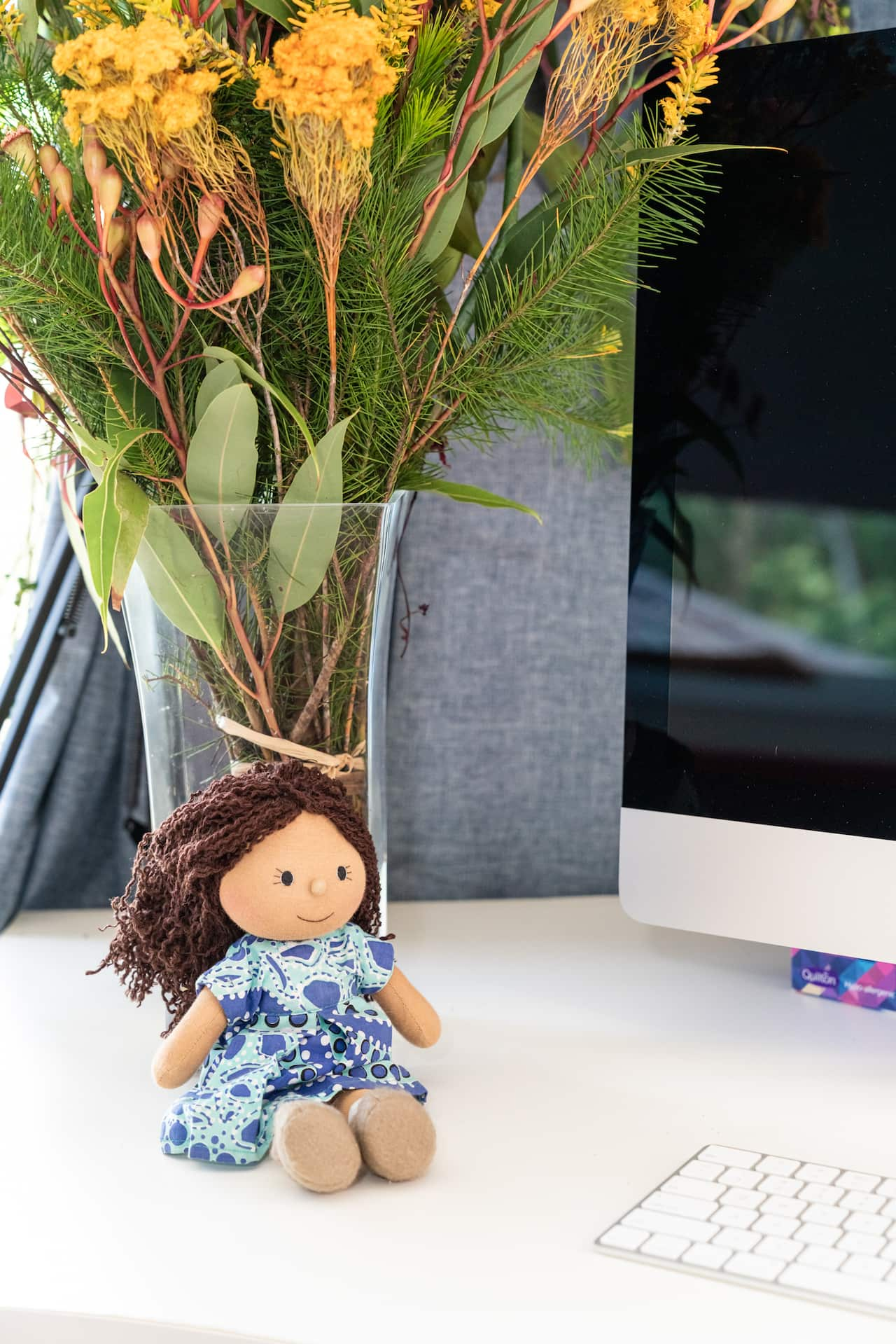
The Kiya doll has been very popular since appearing on ABC's Play School. Source: Supplied / Trish Evans Photography
'She's just another doll'
Sarah Metcalfe, who is a non-Indigenous family day care educator who lives near Picton, NSW, said by providing dolls such as Kiya it allowed children to see that there were many different people that make up both the Aboriginal and broader community.
"I do have Indigenous children in care and they love having a doll that looks like them, same as my non-Indigenous children love having dolls that look like them as well, but all of the children love playing with all of the dolls," she said.
Ms Metcalfe said she makes an effort to embed Indigenous perspectives into activities so the children also know Kiya is an Indigenous doll and they can relate to her because of the different books they read.
But she said her non-Indigenous children saw Kiya as just another baby, another person like all of the other dolls.
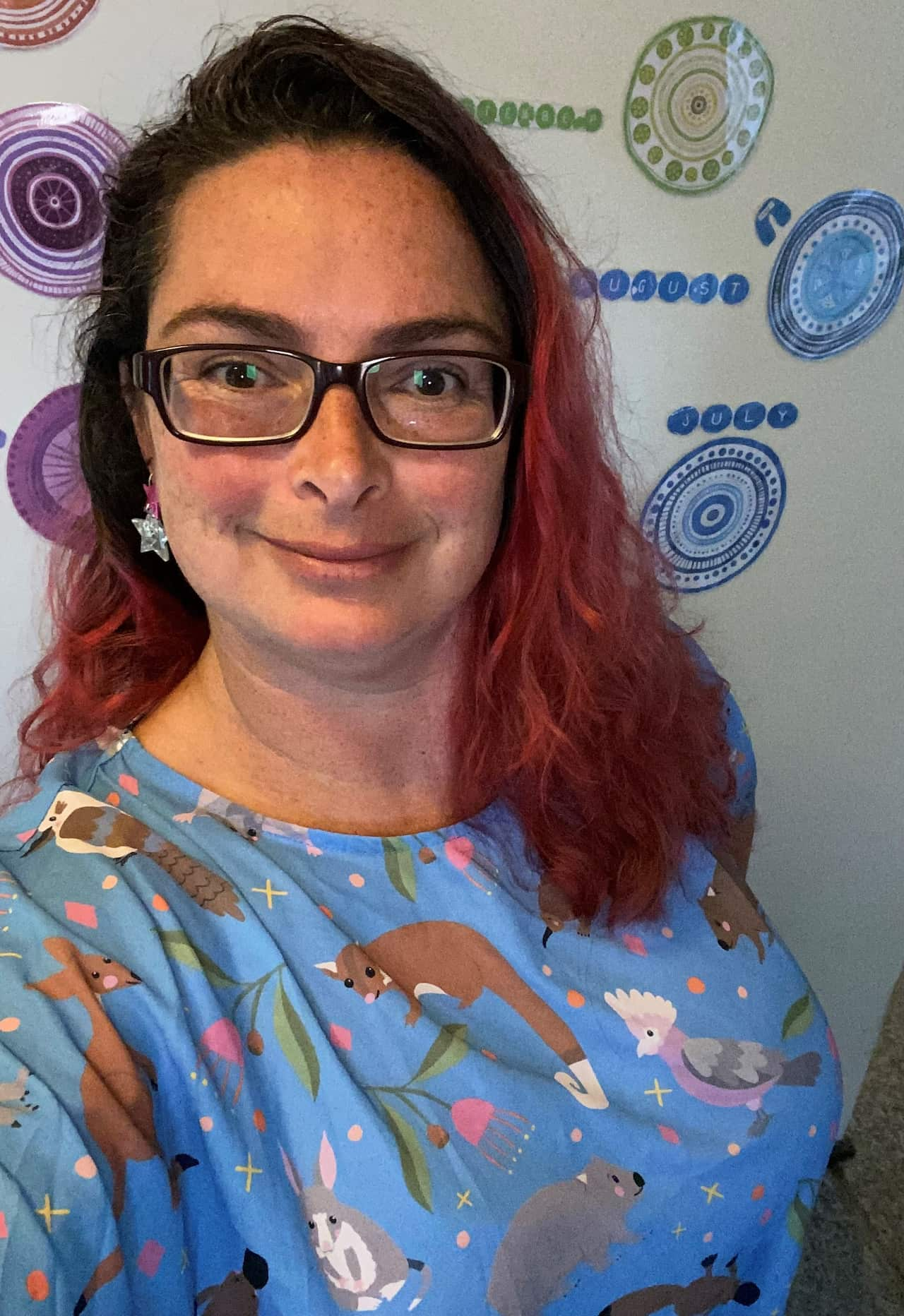
Sarah Metcalfe is a family daycare educator in NSW who says children love to play with the Kiya doll. Source: Supplied
"I think that's a big thing in how children relate ... they'll note the differences but in their eyes it doesn't really matter, she's just another lovely doll ... and she's one of our most popular dolls.
"She's a great size for small children to carry around and they're just drawn to her, they love the colours in her dress."
Would you like to share your story with SBS News? Email






